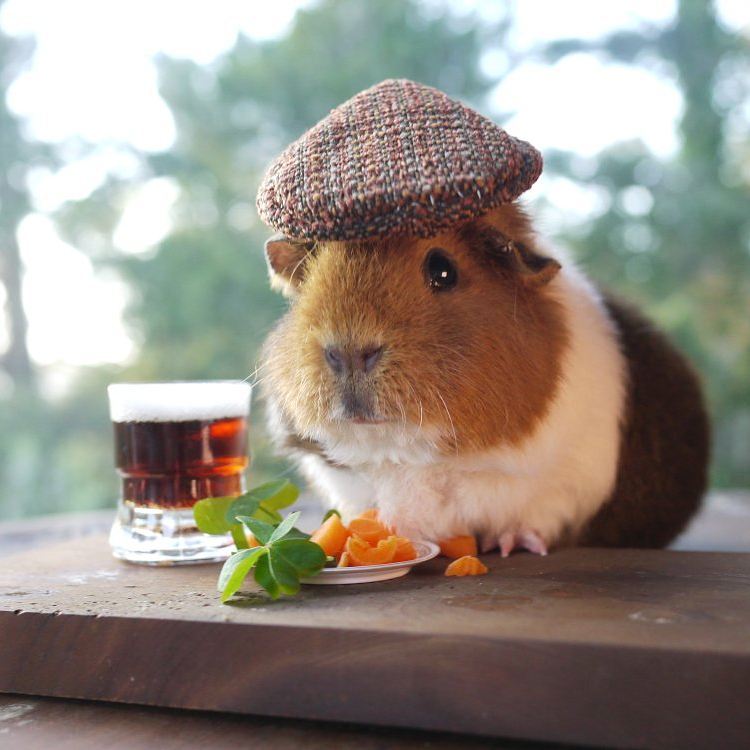Crops can blight, animals can get diseases. I don’t know much about hydroponics but I know that bacteria are a concern. What food source is the most reliable, the least likely to produce less food than expected?
Diversity of food sources.
This is the right response, along with proper crop rotation. No magic single correct answer here will work.
Not to be contrary, but… Soylent Green would fit the bill.
I know you’re not really being serious, but it doesn’t really. I considered the logistics of this for an RP I was running and it doesn’t add up. You need way way way way more food to grow a human being than the human being provides in food when they’re dead. At most, being very very generous, you could meet 1% of a society’s food needs with cannibalism. And that’s a really high estimate. It’s really more of a special treat than a daily diet!
thats assuming you want to maintain the population size.
It’s so inefficient you may as well just leave the population to starve, nearly the same effect for much less work!
You’re going to have people anyway, and they’re going to die. We just need a process to make their deaths a d resulting disposal as productive as possible. We could set an optimum age limit; maybe gameify the process, and package it with respect and nobility. We could give it a pleasant name - something like “Carousel” maybe.
We’re looking for balance, not a Buddhist sort of minimal impact.
Come on now Aldous, put your glasses on mate.
Conservation of energy, basically. A self-eating population is a perpetual motion machine.
They’re making our food out of people, next thing they’ll be breeding us like cattle! for food!
But what happens when covid kills 75% of your long pig stock? Thousands will starve, millions will die!
/unexpected futurama
Likely Algae. Good luck intentionally getting less
This reads like a Rimworld post.
I don’t think there’s a Rimworld community on Lemmy and I’m not going on Reddit anymore so I’ll just throw this comment into the void and hope some fans are out there. 👋
Also in Rimworld terms the answer is corn (if monoculture) and send everyone to harvest at the first sign of blight.
But in both Rimworld and real life, a monoculture strategy isn’t sustainable. Diversifying via multiple food sources reduces your risk of disaster leading to starvation.
Rimworld is awesome. But I guess I was thinking in terms of “all crops” being one type of food source. In Rimworld, you can’t get multi-year droughts that make growing anything almost impossible. In real life, you can.
Yeah idk how to link it. Here: https://lemmy.world/c/rimworld
My first thought when seeing the title was also Rimworld. Glad to know others are fans of the corn monopoly.
[email protected] was the correct answer, you nailed it the first try
Wooo. Just doesn’t show properly on Boost i guess!
I was going to say hydroponic rice. It grows so quick and if anything happens it’s back up in 7 days.
The problem with corn is that it takes so long to grow that you get a wealth spike when harvesting it and if anything happens to the harvest you can be at risk of starvation.
The trick is to always keep roughly a year worth of corn stored, and only sell off the excess.
After the initial ‘getting the base running’ I usually pay merchants that accept it in corn, up to the amount where they end up giving me all their silver on top of what I wanted to buy.
and send everyone to harvest at the first sign of blight
That sounds like a good strategy until blight happens in the middle of a massive invasion.
I still do mostly corn, but with smaller fields with gaps in between. Makes it easier to take fields out of use if I don’t need them and they’d just be wasting work time, and I can ignore blight without losing too much if something else is going on.
Diversity is the most stable plan. Don’t put all your eggs in one basket. Get food from multiple sources.
Chicken eggs
Fish eggs
Duck eggs
Goose eggs
Quail eggs
Platypus eggs
??
Profit
Monotremes: the only animals that could make their own custard.
Aeroponics, under a controlled greenhouse environment, is technically the most stable food production method, assuming you have the ability to maintain the systems supporting it, and of course a good knowledge of a particular plant’s requirements and growth habits.
Pros:
- Water Efficiency: Uses up to 98% less water compared to traditional farming.
- Space Efficiency: Can be used in vertical farming setups, making it ideal for urban areas.
- Growth Speed: Crops can grow faster due to higher oxygen levels and nutrient delivery.
- Reduced Pesticide Need: Since plants aren’t grown in soil, there’s a lower risk of soil-borne diseases.
Aeroponics, when done correctly, can yield impressive results in terms of growth speed and resource efficiency compared to traditional farming.
Can vouch. I don’t have an aeroponic setup, but I do have a hydroponic setup. Lots of reading has led me to aeroponics, especially high pressure aeroponics (HPA), although I don’t have the means to set this up myself at the moment. Reduced water and land use plus higher yield and if you grow indoors or in a greenhouse you get less pests. Seems like the best possible option for growing food sustainably
Cockroaches. They can survive nuclear events and will eat almost anything. They multiply faster than plants too.
/\ low intelligence specimen
Oysters of the land bro
If you eat shrimp, you can eat insects since it is almost the same thing.
Intercropping, preservation of biodiversity, rotation of crops… There is no magic bean, but in the long run basic conservation combined with advancement of plant genetics is the only realistic path forward, in my professional opinion
One possibility is breadfruit. We, realistically, can’t depend on one though. Even the most robust staple food will still have some sort of vulnerability so it will always be of benefits to have several.
Crops, but not unbelievably large monocrop farms. Diverse, rotated soil in reasonably sized fields, widely distributed. A variety of different crops mitigates blights, and they’re the most efficient food source, in terms for how much food produced based on the inputs (amount of land, water, energy, etc.) and other considerations (land used, greenhouse gas emissions!
deleted by creator
Aeroponics is really vulnerable to power outages and disease is still a concern, it’s a lot more expensive and vulnerable to supply chain disruption too, and consumes power power than just growing stuff in a polytunnel
deleted by creator
It’s just clearly worse than growing vegetables in a field, really
supply chain isn’t really an issue once you’ve got your setup going
Til you run out of phosphorus, or potassium, or whatever.
deleted by creator
Obviously it’s not just one field that you use again and again. All you need to do to replenish the nutrients in the field is to just let it hang out and don’t do anything with it for a while, and use some other areas in the meantime.
Much, much more stable, renewable and reliable than aeroponics. It’s a cool concept but it’s just nowhere near at the level of competing with good ol fashioned dirt yet!
deleted by creator
Absolute nonsense, sorry. Horizontal farming is more than capable of feeding everyone on earth today, and could sustain a population even ten times what we currently have - we’d need to give up meat, of course - which we should be doing anyways.
Simply leaving a field alone will not replenish it with all the nutrients a crop needs.
I mean, it will eventually - it might take a while, sure, but there’s so much land, and with sustainable farming practices (good crop rotation, organic farming, etc.) then soil erosion and nutrient depletion are significantly reduced anyways. It’s definitely much, much easier and significantly less reliant on synthetic nutrients than hydroponics or aeroponics. A lot less work, too!
Don’t plants grow faster with higher concentrations of CO2, rather than higher oxygen?
deleted by creator
You can’t really generate much calories with aeroponics. I thought they could only grow saladlike foods.
deleted by creator
Anything living can get diseases. I’d still go for crops grown in a controlled, indoor environment.
There’s a way to grow bacteria on natural gas if you don’t have grow lights, and they used it to make fish feed for at least a while, as well as some lab work on electricity-eating bacteria. If you don’t care about your liver I guess this drink is also technically a source of calories with no biological production needed.
Probably soon it will be some form of single cell protein like methanogen. Being able to grow with less sunlight is pretty valuable.
Everything the body needs
Seize people’s grass lawns and tear out 2/3 of roadways and convert the land into community gardens and ponds, grow food where the people are. Probably some form of population control.
Pie in the sky though. We’ll probably just start eating bugs by the container ship load and then go extinct instead
That’s not going to be as much land as you think it is, relative to the food needs of the maybe billion people living in lawn-growing places.
No you’re right, but it would be one of the more difficult things to convince people to do, so in this pie in the sky scenario where people actually give a crap about anything they’d also be doing a lot of other stuff that together would make a larger whole.
Oh yeah, not to say that lawns make sense. It’s just not a silver bullet.
Nah def not. Imo, from the evidence I’ve gathered so far about how the universe works, silver bullets don’t exist. Every solution has warts somewhere. Things we call “good” tend to require good old fashioned struggle and discomfort, so people need to stop pleasure seeking and chasing imaginary silver bullets. But they probably won’t, bc they’re conditioned to pleasure seek by capitalism and advertising and pop culture. Blah blah negative blah blah /rant
I would sort of expect it to be the stuff we struggle to get rid of, like fungi and weeds. So maybe mushrooms and dandelions? This is just a wild guess, and obviously you couldn’t live off them forever.
The things that cause famines are lack of diversity.










